Ba7.7
The pair of suspended fishes (Ba7-5--6) could allude to those
in the
Pisces constellation - the pair who
remarkably enough in Roman times would 'create summer in winter' so to say. An
omen of the Dark Ages to come, for
Great Pan was dead and Polaris (Ana-nia)
was the 'star pillar to fish by'.
... This [σ
Sagittarii] has been identified with Nunki of the
Euphratean Tablet of the Thirty Stars, the Star of the
Proclamation of the Sea, this Sea being the quarter
occupied by Aquarius, Capricornus, Delphinus, Pisces, and Piscis
Australis. It is the same space in the sky that Aratos
designated as Water ...
The summer would begin out at Sea (in Winter), already before
making Land-fall (0h).
Hora. Ancient name of summer (toga-hora,
winter summer). Vanaga. 1. In haste (horahorau). 2.
Summer, April; hora nui, March; vaha hora, spring.
3. 'Hour', 'watch'. 4. Pau.: hora, salted, briny. Ta.:
horahora, bitter. Mq.: hoáhoá, id. 5. Ta.: hora,
Tephrosia piscatoria, to poison fish therewith. Ha.: hola,
to poison fish. Churchill. Horahora, to spread, unfold,
extend, to heave to; hohora, to come into leaf. P Pau.:
hohora, to unfold, to unroll; horahora, to spread
out, to unwrap. Mgv.: hohora, to spread out clothes as a
carpet; mahora, to stretch out (from the smallest
extension to the greatest), Mq.: hohoá, to display, to
spread out, to unroll. Ta.: hohora, to open, to display;
hora, to extend the hand in giving it. Churchill.
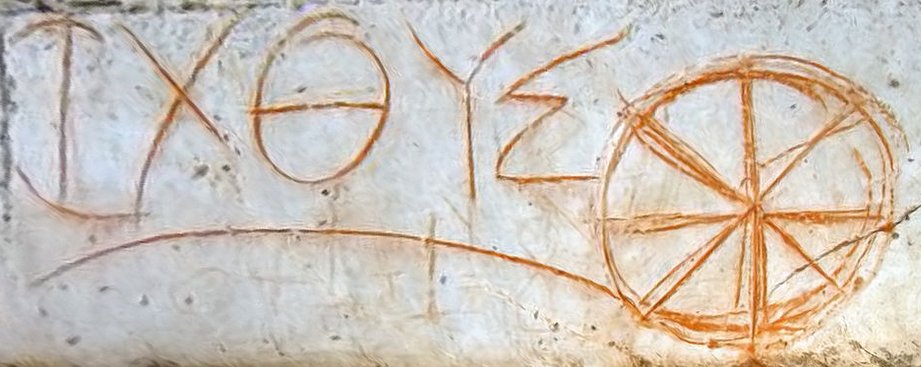
The Pair of Fishes were loosely tied together to the star named Knot (Al-risha, α Piscium, *29).
They had room for movement, but not much.
... That the Sun-gods Dionysus, Apollo and Mithras were all also
reputedly born at the Winter solstice is well known, and the
Christian Church first fixed the Nativity feast of Jesus Christ
at the same season, in the year A.D. 273 [→ 3 * 91]. St.
Chrysostom, a century later, said that the intention was that
'while the heathen were busied with their profane rites the
Christians might perform their holy ones without disturbance',
but justified the date as suitable for one who was 'the Sun of
Righteousness' ...
.jpg)
 |
 |
 |
 |
 |
 |
|
Ba6-44 |
Ba7-1 (326 -
74) |
Ba7-2 |
Ba7-3 (250 + 4) |
Ba7-4 |
Ba7-5 |
|
e tagata hoko |
ki te kea e |
kua rere te manu ki ruga |
o te tagata - koia kua
vaha mea |
ko te tao kua mau - i te ika |
eko te tao - kua
here ki te ika |
|
Tao. 1. To cook in an oven, to
sacrifice. P Mgv., Mq., Ta.: tao, to cook
in an oven. 2. To carry away. 3. Abscess, bubo,
scrofula, boil, gangrene, ulcer, inflammation,
sore. Mgv.: taotaovere, small red spots
showing the approach of death. Mq.: toopuku,
toopuu, boil, wart, tumor. Ta.: taapu,
taapuu, scrofula on neck and chin. 4.
Mgv.: a lance, spear. Ta.: tao, id. Sa.:
tao, id. Ma.: tao, id. 5. Mgv.:
taotaoama, a fish. Sa.: taotaoama,
id. 6. Ta.: taoa, property, possessions.
Ma.: taonga, property, treasure.
Churchill. Sa.: tao, to bake;
taofono, taona'i, to bake food the
day before it is used; tau, the leaves
used to cover an oven. To.: tao, to cook
food in a oven, to bake. Fu.: taò, to put
in an oven, to cook. Niuē:
tao,
to bake. Uvea: tao,
to cook, to bake. Ma., Rapanui: tao,
to bake or cook in a native oven, properly to
steam, to boil with steam. Ta.: tao,
the rocks and leaves with which a pig is covered
when cooking; baked, boiled, cooked. Mq., Mgv.,
Mg., Tongareva: tao,
to bake in an oven ... The word refers to the
specific manner of cookery which involves the
pit oven. The suggestion in the Maori,
therefore, does not mean a different method; it
is but an attempt more precisely to describe the
kitchen method, a very tasty cookery, be it
said. The suggestion of boiling is found only in
Tahiti, yet in his dictionary Bishop Jaussen
does not record it under the word
bouillir;
boiling was little known to the Polynesians
before the European introduction of pottery and
other fire-resisting utensils ... Churchill 2.
Kao-kao, v.
Haw., be red. Root and primary meaning obsolete
in Haw. Sam., tao,
to bake. Marqu., tao,
bake, roast, sacrifice. Tah., tao,
baked, boiled, cooked. Greek, καιω,
Old Att. καω,
to light, kindle, burn, scorch. According to
Liddell and Scott, Pott refers καιω
to Sanskrit çush,
be dry, but Curtius rejects this. In Dravid.
(Tamil) kay,
to be hot, burn. Fornander.
Here. 1. To catch eels in
a snare of sliding knots; pole used in this
manner of fishing, with a perforation for the
line. 2. To tie, to fasten, to lash; rasp made
of a piece of obsidian with one rough side;
cable, tie; figuratively: pact, treatise.
Vanaga. 1. To lash, to belay, to knot the end of
a cord, to lace, to tie, to fasten, to knot; to
catch in a noose, to strangle, to garrote;
here pepe, to saddle; moa herea, a
trussed fowl; hehere, collar, necklet;
herega, bond, ligament; heregao,
scarf, cravat. 2. Hakahere. To buy, to
sell, to barter, to part with, to pay for, to do
business, to compensate, to owe, to disburse, to
expiate, to indemnify, to rent out, to hire, to
traffic, to bargain, to bribe; merchant, trader,
business, revenge; tagata hakahere,
merchant, trader; hakahere ki te ika, to
avenge; hakaherega, ransom, redemption;
hakahererua, to exchange, to avenge. 3.
Here ei hoiho, incense. Churchill.
Hereke, festering wound, cracked skin.
Barthel 2. |
|
Febr 9 (40) |
10 |
11 |
12 (408) |
13 |
All Hearts' Day |
|
... On
February 9 the Chorti Ah K'in,
'diviners', begin the agricultural year. Both
the 260-day cycle and the solar year are used in
setting dates for religious and agricultural
ceremonies, especially when those rituals fall
at the same time in both calendars. The ceremony
begins when the diviners go to a sacred spring
where they choose five stones with the proper
shape and color. These stones will mark the five
positions of the sacred cosmogram created by the
ritual. When the stones are brought back to the
ceremonial house, two diviners start the ritual
by placing the stones on a table in a careful
pattern that reproduces the schematic of the
universe. At the same time, helpers under the
table replace last year's diagram with the new
one. They believe that by placing the cosmic
diagram under the base of God at the center of
the world they demonstrate that God dominates
the universe. The priests place the stones in a
very particular order. First the stone that
corresponds to the sun in the eastern, sunrise
position of summer solstice is set down; then
the stone corresponding to the western, sunset
position of the same solstice. This is followed
by stones representing the western, sunset
position of the winter solstice, then its
eastern, sunrise position. Together these four
stones form a square. They sit at the four
corners of the square just as we saw in the
Creation story from the Classic period and in
the Popol Vuh. Finally, the center stone is
placed to form the ancient five-point sign
modern researchers called the quincunx
... |
|
DEC 7 |
8 |
9 |
10 (408 - 64) |
11 (345) |
12 |
|
STARS
INVISIBLY CLOSE TO THE SUN: |
|
BUNDA (THE
FOUNDATION) |
θ
Piscis Austrini (330.1),
λ
Oct.
(330.7) |
|
Al Sa'd al Su'ud-22
(Luckiest of the Lucky) /
Emptiness-11 (Rat)
TSIN = 36 Capricorni
(325.2),
ALPHIRK (The Flock) =
β
Cephei
(325.7),
SADALSUD =
β
Aquarii,
ξ
Gruis (325.9) |
No star listed (326) |
CASTRA = ε Capricorni
(327.2),
BUNDA = ξ Aquarii
(327.5)
SIRIUS (α Canis Majoris) |
Mahar sha hi-na Shahū-26
(Western One in the Tail of the Goat)
NASHIRA =
γ
Capricorni
(328.0),
ν
Oct. (328.3),
AZELFAFAGE =
π¹
Cygni,
κ
Capricorni (328.7) |
Arkat sha hi-na Shahū-27 (Eastern One in the
Tail of the Goat)
ENIF (The Nose) =
ε
Pegasi, ERAKIS =
μ
Cephei
(329.2),
46 CAPRICORNI, JIH (the Sun) =
κ
Pegasi
(329.3),
ι
Piscis Austrini (329.4),
λ
Capricorni (329.6),
ν
Cephei (329.7),
DENEB ALGIEDI (Tail of the Goat) =
δ
Capricorni
(329.8)
*288.0 = *329.4 - *41.4 |
|
STARS VISIBLE
CLOSE TO THE FULL MOON: |
|
Star-25 (Horse)
/
ANA-HEU-HEU-PO-5 (Pillar where debates were
held)
ALPHARD (The Horse) =
α
Hydrae
(142.3),
ω
Leonis (142.6),
τ¹
Hydrae (142.7) |
Al Tarf-7 (The End)
ψ
Velorum (143.3),
ALTERF =
λ
Leonis,
τ²
Hydrae (143.4),
ξ
Leonis (143.5)
*102.0 = *143.4 - *41.4 |
A
Hydrae
(144.1)
VEGA (α Lyrae) |
Creation of our present world
UKDAH (Knot) =
ι
Hydrae (145.4),
κ
Hydrae (145.5),
SUBRA =
ο
Leonis
(145.8)
ALPHEKKA
MERIDIANA
*104.0 = *145.4 - *41.4 |
5 Imix
9 Kumk'u
Rishu A.-13 (Head of the Lion)
ψ
Leonis (146.4),
RAS ELASET AUSTRALIS = ε Leonis
(146.6)
*105.0 = *146.4 - *41.4
|
VATHORZ PRIOR = υ Carinae
(147.9) |
|
UKDAH (THE
KNOT) |
 |
|
Aug 10 (40 + 182) |
11 |
12 (224) |
13 (408 - 183) |
14 |
15 (227
→
π) |
|
JUNE 7 |
8 |
9 (224 - 64) |
10 (161) |
11 |
12 |
|
... Midsummer is the flowering season of the
oak, which is the tree of endurance and triumph,
and like the ash is said to 'court the lightning
flash'. Its roots are believed to extend as deep
underground as its branches rise in the air -
Virgil mentions this - which makes it emblematic
of a god whose law runs both in Heaven and in
the Underworld ... The month, which takes its
name from Juppiter the oak-god, begins on June
10th and ends of July 7th. Midway comes St.
John's Day, June 24th, the day on which the
oak-king was sacrificially burned alive. The
Celtic year was divided into two halves with the
second half beginning in July, apparently after
a seven-day wake, or funeral feast, in the
oak-king's honour ... |
 |
 |
 |
 |
 |
 |
 |
|
Ba7-6 |
Ba7-7 |
Ba7-8 |
Ba7-9
(260) |
Ba7-10 (9 * 29) |
Ba7-11 |
Ba7-12
→ 84 |
|
e manu oho era |
ki
to ahi e |
e ka ati mai koe i to
tauuru |
e tagata kai era |
ki to hatu e |
kua haga ko
te makere |
mai tae
atu ki te hetu |
|
Ahi. Fire; he-tutu
i te ahi to light a fire. Ahiahi
= evening; ahiahi-ata, the last
moments of light before nightfall. I te
ahiahi-ata he garo te raá ki raro ki te vai
kava. In the evening the sun disappears
under the sea. Ku-tea-á te hetu'u ahiahi,
the evening star has risen. Vanaga. 1.
Candle, stove, fire (vahi); ahi
hakapura, match; ahi hakagaiei,
firebrand waved as a night signal. P Mgv.:
ahi, fire, flame. Mq.: ahi,
fire, match, percussion cap. Ta.: ahi,
fire, percussion cap, wick, stove. 2. To be
night; agatahi ahi atu, day before
yesterday. 3. Pau.: ahi, sandalwood.
Ta.: ahi, id. Mq.: auahi, a
variety of breadfruit. Sa.: asi,
sandalwood. Ha.: ili-ahi, id.
Ahiahi, afternoon, night; kai ahiahi,
supper. P Pau., Mgv., Mq., Ta.: ahiahi,
afternoon, evening. Ahipipi (ahi
1 - pipi 2) a spark, to flash.
Churchill.
... Teke said to
Oti, 'Go and take the hauhau
tree, the paper mulberry tree, rushes,
tavari plants, uku koko grass,
riku ferns, ngaoho plants, the
toromiro tree, hiki kioe plants (Cyperus
vegetus), the sandalwood tree,
harahara plants, pua nakonako
plants, nehenehe ferns, hua taru
grass, poporo plants, bottle gourds (ipu
ngutu), kohe plants, kavakava
atua ferns, fragrant tuere heu
grass, tureme grass (Diochelachne
sciurea), matie grass, and the
two kinds of cockroaches makere and
hata.'
... The division into quarters of a
28-series can be applied to the main phases
of the moon during the visible period as was
as to a (reflex of the old world?) sidereal
month.
The separate subgroup (29 makere - 30
hata) consists of the names of two
types of cockroaches, but in related eastern
Polynesian languages these names can also be
explained on a different level. MAO.
makere, among others, 'to die', and
whata, among others, 'to be laid to rest
on a platform', deserve special attention.
The theme hinted at is one of death
and burial. In our scheme they occur at just
that time when the moon 'has died'! This
lends further support to the lunar thesis.
Barthel 2.
Atu. Particle of
meaning opposite to that of mai; it
refers to the second or third person,
expressing movement away: ka-avai-atu,
give it to him: he-oho-atu au, I
am going there, after you; i-oho-atu-era,
when I had gone there. Vanaga. 1. a.
Directive, of motion from the speaker. b.
Somewhat expressive of the comparative
degree. 2. Pupil; hakaatu, proof;
hare hakaatuga, schoolhouse, class. 3. (hakaatu),
to presage. 4. (hakaatu), mark,
object. Churchill.
Hetu 1. To (make)
sound; figuratively:
famous, renowned. 2. To crumble into embers (of a
bonfire). Hetu'u. Star,
planet; hetu'u popohaga
morning star; hetu'u ahiahi evening star; hetu'u viri
meteorite. Vanaga Hetu 1. Star (heetuu);
hetu rere, meteor; hetu pupura,
planet. P Pau.: hetu, star. Mgv.:
etu, id. Mq.: fetu, hetu,
id. Ta.: fetu, fetia, id. The
alternative form fetia in Tahiti, now
the only one in common use, need not be
regarded as an anomaly in mutation. It seems
to derive from Paumotu fetika, a
planet. Its introduction into Tahiti is due
to the fashion of accepting Paumotu vocables
which arose when the house of Pomare
came into power. 2. Capital letter (? he
tu). 3. To amuse. 4. To stamp the feet.
Hetuhetu, to calk, to strike the
water. Hetuke, sea urchin. Churchill.
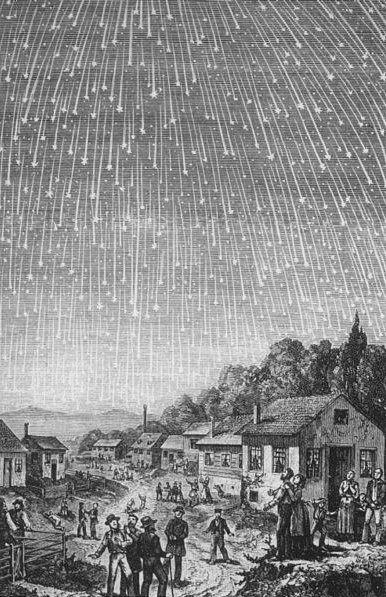 |
|
INVISIBLY
CLOSE TO THE SUN: |
|
Febr 15 |
16 |
17 |
18
(414) |
19 (50) |
20 |
21 |
|
DEC 13 |
14 |
15 |
16 (350) |
17 |
18 |
19 |
|
KUH (Weeping)
=
μ
Capricorni (331.4),
γ
Gruis (331.5)
*290.0 = *331.4 - *41.4 |
No star listed (300 + 32) |
η Piscis Austrini (333.4)
*292.0 = *333.4 - *41.4 |
Rooftop-12 (Swallow)
22h (334.8)
KAE UH (Roof) = ο Aquarii
(334.0),
AL KURHAH (White Spot) = ξ Cephei (334.4),
SADALMELIK (Lucky
King) = α Aquarii,
AL DHANAB (The Tail) = λ Gruis
(334.6), ι Aquarii, ν Pegasi (334.7)
*293.0 = *334.4 - *41.4 |
ι
Pegasi (335.0),
ALNAIR (The Bright One) =
α
Gruis
(335.1),
μ
Piscis Austrini,
υ
Piscis Austrini (335.3),
WOO (Pestle) =
π
Pegasi
(335.7),
BAHAM =
θ
Pegasi (Good Luck of the Two Beasts),
τ
Piscis Austrini (335.8)
|
ζ
Cephei (336.2),
λ
Cephei (336.3), -/270 Lac.
(336.7), λ Piscis Austrini (336.8) |
μ
Gruis (337.0),
ε
Cephei (337.2), 1/325 Lac. (337.3),
ANCHA (Hip) =
θ
Aquarii (337.4),
ψ
Oct.
(337.5), α Tucanae (337.9)
*296.0 = *337.4 - *41.4
*337.4 = *169.4 (Coxa, the Hip in Leo) +
*168.0 |
|
...
If the moral
attitudes of primitive man are hard for the
Western mind to grasp and translate into
familiar terms, there can hardly be one more
so than the Maori notion of cooked food as
the lowest thing, the furthest opposite to
the sacred, in fact filthy.
For us to divest our
minds of Christian notions of good and evil
and substitute the concept of simple
payment, harm for harm (or 'revenge', as we
commonly call it with a misleading moral
overtone), is simple enough - perhaps
because every schoolchild has at some time
known the latter in his horrid heart. Even
the Maori custom of weeping over friends
when they arrive instead of when they depart
has a certain logic that is not beyond our
comprehension. But to enter, against all
conditioning, into the minds of a people for
whom cooked food and the act of eating could
carry the overtones of meaning that we in
our greater wisdom attach to their physical
opposites and to sex, is a good deal harder.
One has somehow to throw the mind into a
state of being that is radically unlike
ours. Yet if the trick can be done, a light
comes on ... |
|
VISIBLE
CLOSE TO THE FULL MOON: |
|
υ¹
Hydrae (148.4), RAS ELASET BOREALIS
(Northern Head of the Lion) =
μ
Leonis
(148.7)
*107.0 = *148.4 - *41.4 |
TSEEN KE (Heaven's Record) =
φ
Velorum
(149.9) |
ν Leonis (150.1), π Leonis (150.6) |
υ² Hydrae (151.8) |
Al Jabhah-8 (Forehead)
/
Maghā-10 (Bountiful) /
Sharru-14 (King)
10h (152.2)
AL JABHAH =
η
Leonis (152.4),
REGULUS (Little KIng) =
α
Leonis
(152.7)
*111.0 = *152.4 - *41.4 |
λ Hydrae (153.2) |
ADHAFERA = ζ Leonis,
TANIA BOREALIS (Northern Gazelle) = λ Ursae
Majoris, SIMIRAM = ω Carinae
(154.7) |
|
Aug 16 |
17 (229) |
18 |
19 |
20 (50 +
182) |
21 |
22 |
|
JUNE 13 |
14 (165) |
15 |
16 |
17 (80
+ 88) |
18 |
19 |
.jpg) |
We could then perceive that the creator of the B text here might
have had a mirror in mind (cfr Ba7-12) because at Terminalia
(February 23), we can see, there was evidently not an end station but
rather a complementary revival.
... He was moreover confronted with
identifications which no European, that is, no average rational
European, could admit. He felt himself humiliated, though not
disagreeably so, at finding that his informant regarded fire and
water as complementary, and not as opposites. The rays of light
and heat draw the water up, and also cause it to descend again
in the form of rain. That is all to the good. The movement
created by this coming and going is a good thing. By means of
the rays the Nummo draws out, and gives back the life-force.
This movement indeed makes life. The old man realized that he
was now at a critical point. If the Nazarene did not understand
this business of coming and going, he would not understand
anything else. He wanted to say that what made life was not so
much force as the movement of forces. He reverted to the idea of
a universal shuttle service. 'The rays drink up the little
waters of the earth, the shallow pools, making them rise, and
then descend again in rain.' Then, leaving aside the question of
water, he summed up his argument: 'To draw up and then return
what one had drawn - that is the life of the world' ...
And
instead of a special pair of days (Bissextum) following
Terminalia there
was a pair of night side culminations (at 21h), viz. those of Castor
and of Procyon.
Maybe the creator of the B text had observed that π Aquarii
was not before ρ Aquarii but after. Hidden
things (things in the dark) needed a hole (π) to emerge from.
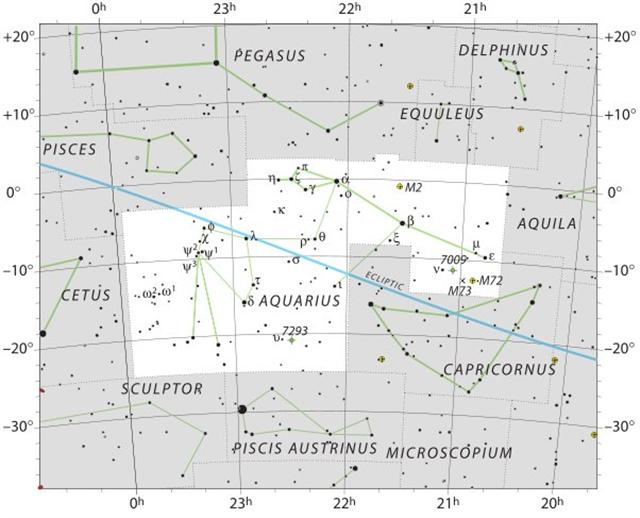
 |
 |
 |
 |
 |
 |
 |
 |
|
Ba7-13 (264) |
Ba7-14 |
Ba7-15 |
Ba7-16 |
Ba7-17 |
Ba7-18 |
Ba7-19 |
Ba7-20 |
|
e kua tere koia |
e tagata oho era - ki te Raa
e |
ka Maroa ra e teie |
ki te henua - kua moe te manu
utu hakaraoa |
mai tae atu ki te marama |
o to hau tea - e kua
haati ïa to kava |
koia ra kua hai ki tona matua
|
eko tona ariki - e koia ra i
tona tamaiti |
|
INVISIBLY
CLOSE TO THE SUN: |
|
2-22 |
Terminalia |
24 (420) |
25 |
Febr
26 |
27 |
28 (59) |
March 1 |
|
DEC 20 |
SOLSTICE |
22 |
23 |
X-MAS EVE |
25 (423
- 64) |
26 (360) |
27 (19 * 19) |
|
Al Sa'ad al Ahbiyah-23 (Lucky Star of Hidden
Things) /
Shatabisha-25 (Comprising a Hundred Physicians)
ε
Oct. (338.1),
ρ
Aquarii
(338.2), 2/365 Lac. (338.5),
SADACHBIA =
γ
Aquarii
(338.6),
π
Gruis (338.9) |
β/172
Lac. (339.2),
4/1100 Lac. (339.4),
π
Aquarii
(339.5)
*298.0 = *339.4 - *41.4
CASTOR (α Gemini) |
δ Tucanae (340.1), ρ Cephei (340.2), ν Gruis
(340.3),
ζ Aquarii, δ Gruis (340.4), 5/1100 Lac. (340.7), σ Aquarii, 6/650 Lac. (340.9)
*299.0 = *340.4 - *41.4
PROCYON (α Canis Minoris) |
υ Oct. (341.0), α/91 Lac. (341.1),
HOMAN (Hero) = ζ Pegasi,
β Piscis Austrini (341.2), ν Tucanae (341.5),
υ Aquarii
(341.9) |
η Aquarii (342.1), σ Gruis (342.4),
SITULA (Water-jar) = κ Aquarii
(342.7)
*301.0 = *342.4 - *41.4 |
ε Piscis Austrini (343.5), ο Pegasi, β Gruis
(343.8) |
ρ Gruis (344.0),
MATAR (Rain) = η Pegasi
(344.2), η Gruis (344.6), β Oct. (344.7) |
λ Pegasi (345.0), ξ Pegasi (345.1), ε Gruis
(345.3), τ Aquarii (345.7), ξ Oct. (345.8), μ
Pegasi (345.9) |
|
... γ,
4.1, greenish, on the right arm at the inner
edge of the Urn, and the westernmost star in the
Y, is Sadachbia, from Al Sa'd al
Ahbiyah, which has been interpreted the
Lucky Star of Hidden Things or Hiding-places,
because when it emerged from the sun's rays all
hidden worms and reptiles, buried during the
preceding cold, creep out of their holes!
 |
|
VISIBLE CLOSE
TO THE FULL MOON: |
|
ALGIEBA (The Mane) =
γ
Leonis,
q Carinae (155.5) |
TANIA AUSTRALIS (Southern Gazelle) =
μ
Ursae Majoris
(156.0),
GHOST OF JUPITER = NGC3242 Hydrae
(156.8) |
Extended Net-26b (Ox)
μ
Hydrae
(157.1) |
Maru-sha-arkat-Sharru-15 (4th Son behind the
King)
SHIR (Possessing Luminous Rays) =
ρ
Leonis
(158.9) |
p Carinae (159.3) |
φ Hydrae (160.3) |
No star listed (161 →
φ) |
VATHORZ POSTERIOR = θ Carinae
(162.1),
PEREGRINI = μ Velorum,
η Carinae
(162.6) |
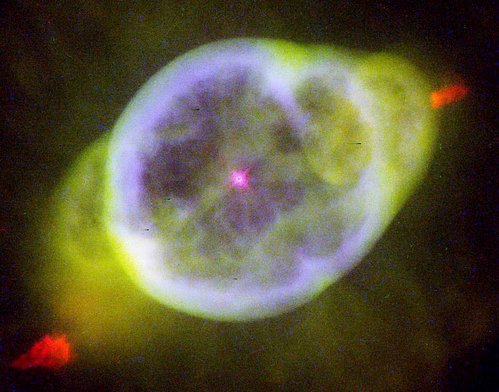 |
|
Aug 23 |
24 (236) |
25 |
26 |
27 |
28 (240) |
29 |
30 |
|
JUNE 20 |
SOLSTICE |
22 |
23 |
DAY OF ST JOHN |
25 (240
- 64) |
26 (354 / 2) |
27 (178) |
I have not attempted to document more than a selected
few of the star culminations. But we can deduce the
culmination of
Pollux should be around 3 nights after that of Castor,
because this was the distance between their heliacal
dates.
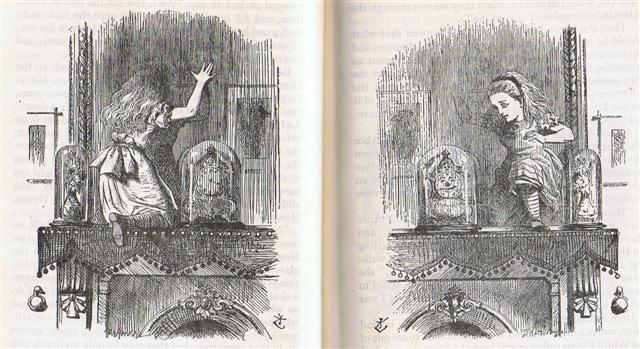
|

.jpg)








.jpg)








